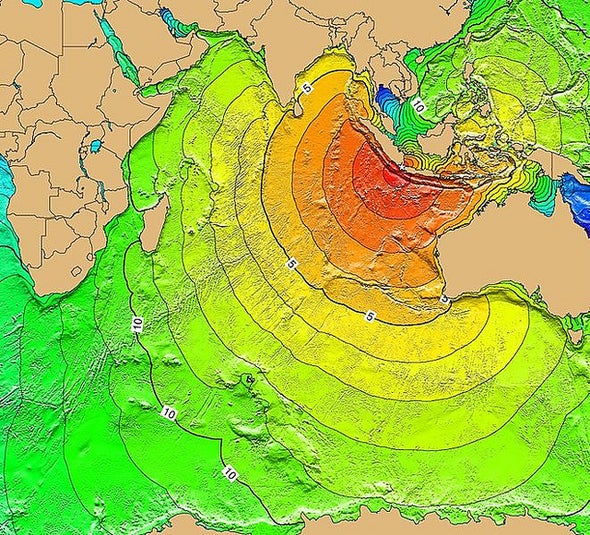The Underappreciated Threat of Volcanic Tsunamis
 First and most obviously: a volcanic tsunami is a mass movement of water caused by a volcano. Note that I didn't say erupting volcano. This is because a volcano doesn't have to erupt to cause a tsunami. Let's have a look at the ways we know volcanoes can generate tsunamis, explosively or not:
First and most obviously: a volcanic tsunami is a mass movement of water caused by a volcano. Note that I didn't say erupting volcano. This is because a volcano doesn't have to erupt to cause a tsunami. Let's have a look at the ways we know volcanoes can generate tsunamis, explosively or not:
During eruptions, volcanic tsunamis can be caused by underwater explosions and shock waves caused by large explosions - even ones that occur above the waterline. Shock waves coupling with sea waves can produce tsunamis up to three meters in height. So, sometimes the energy of the eruption all by itself can make the sea behave in extremely dangerous ways.
Pyroclastic flows and lahars hitting the ocean can also displace water on an alarming scale. Lahars can dump quite a lot of material into the waters near a volcano very quickly, but pyroclastic flows are the stars of this show. These lethal flows of searing gasses and entrained volcanic debris can send a cubic kilometer or more of material careening into formerly serene seas, displacing massive amounts of water that have nowhere to go but away.
Earthquakes, whether tectonic or volcanic in origin, can cause landslides and debris avalanches. It doesn't matter if these mass movements of rock, ash, and other material originate above or below sea level: water gets shifted, and tsunamis happen.
No comments:
Post a Comment